World’s first 3D-printed wedding dress took nearly a month to make: ‘Masterpiece’
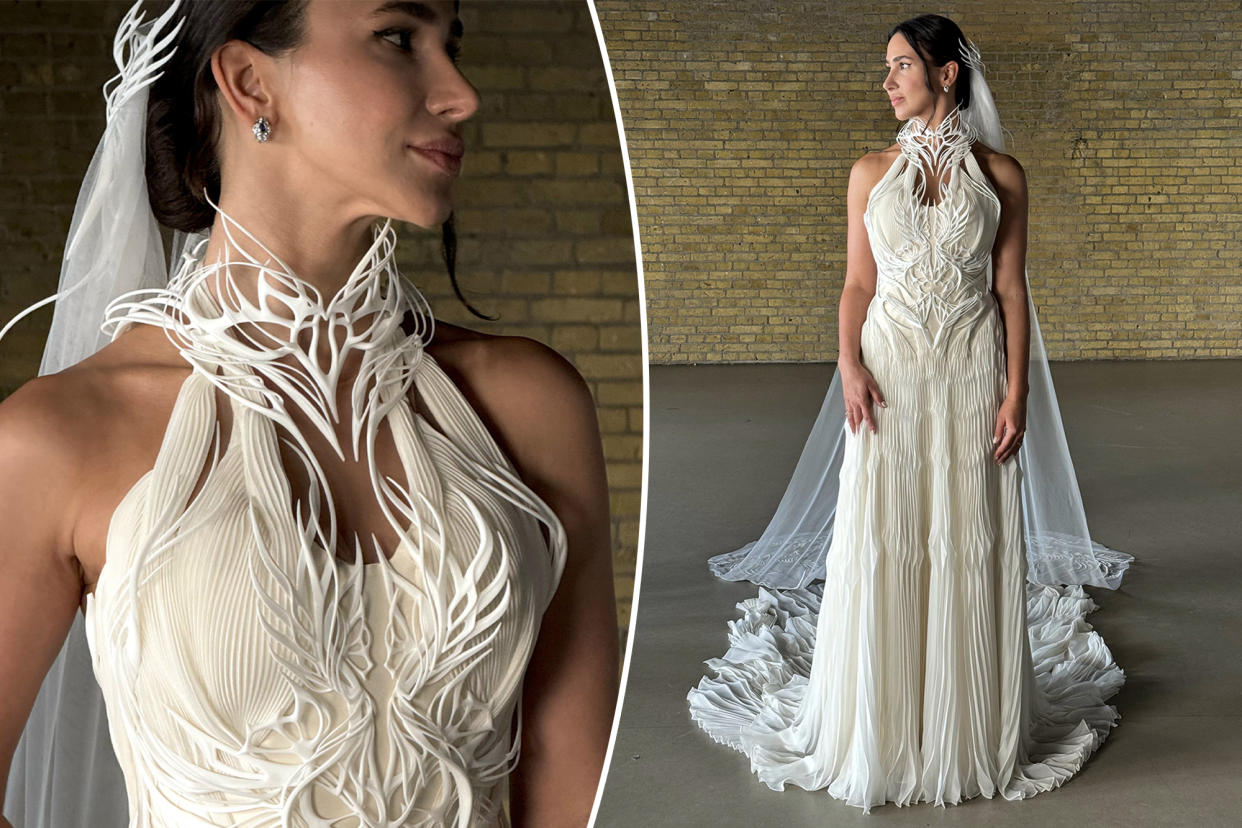
- Oops!Something went wrong.Please try again later.
It was her “something new.”
Mariana Pavani walked down the aisle in a custom gown that marked a big day for not just for the bride but for fashion history, too: Dutch designer Iris van Herpen had used a 3D printer to craft the lawyer’s new-age wedding dress — the first of its kind.
“This was really a dream project for me, because 3D-printed fashions are in museums and on runways, but having it worn by someone on the most special day of her life, I think it’s really something else,” van Herpen told Women’s Wear Daily.
The fantastical bodice of the innovative dress encases the bride’s torso, reaches across her décolletage and wraps around her neck with bony elegance. The one-of-a-kind garment required 600 hours to actualize, 41 hours of printing and yielded a file size of 216.7 MB.
“There are no seams. You could not do this with a typical pattern,” said van Herpen, who used the program ZBrush to draft up the bodice design.
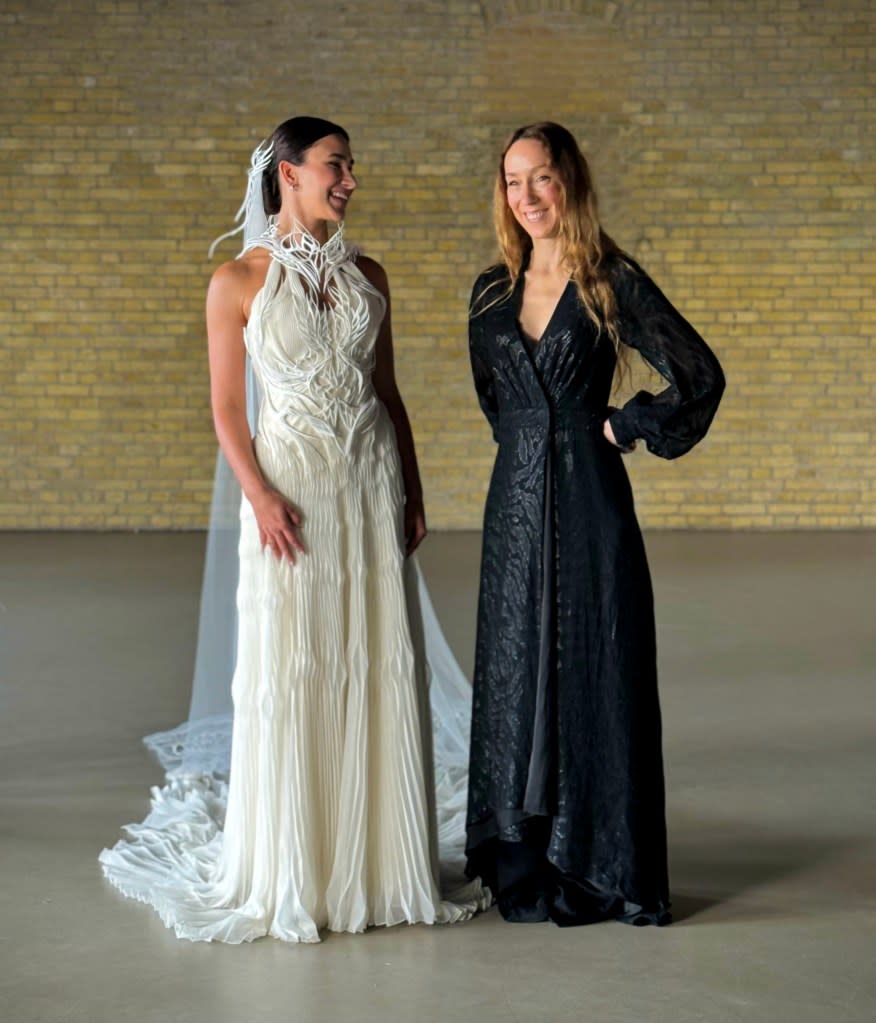
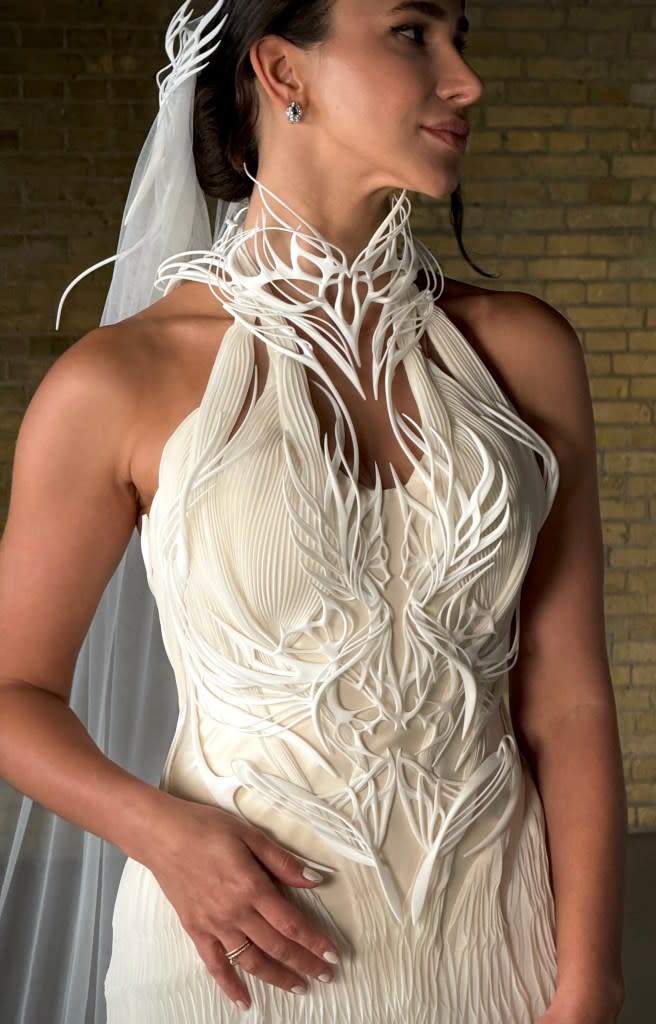
The couturier is known for crafting delicately alien pieces from 3D-printer-friendly stiff, synthetic material. The process can take hours upon hours, but it’s worth it. Her iconic fall 2011 piece “Ensemble,” also known as the Skeleton Dress, appeared in the Metropolitan Museum of Art’s “Women Dressing Women” exhibit.
Pavani underwent a 3D scan of her body to ensure a perfect fit, as well as multiple fittings for the gown beneath, which was pleated by hand. In the final product, the clothier strikes a balance between airy gracefulness and rigidity. Van Herpen said the piece encapsulates “femininity” with a “cutting-edge vibe.”
“You have the sculptural elements, but also the fluidity, the movement. And that is [a] dichotomy that I really love,” van Herpen noted.
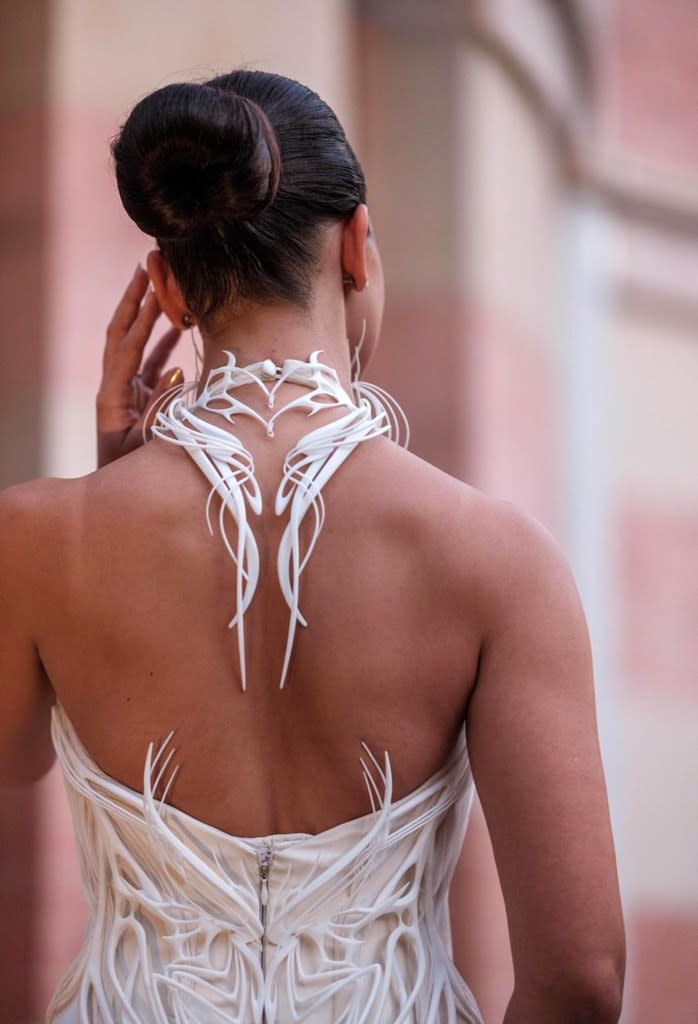
![“So you have the sculptural elements, but also the fluidity, the movement. And that is [a] dichotomy that I really love,” van Herpen said. Marit de Hoog / Iris van Herpen](https://s.yimg.com/ny/api/res/1.2/tKksbXc2WLiANzzqnYAZOQ--/YXBwaWQ9aGlnaGxhbmRlcjt3PTk2MDtoPTE0NDA-/https://media.zenfs.com/en/ny_post_articles_869/28b7f90e27b498c48c3d21d4a3542717)
“I really wanted an outlier dress, something unique,” said Pavani, who was introduced to van Herpen’s work in 2022 by her now-husband, art collector and composer Roberto Toscano.
“From the beginning, I was hoping that the dress would incorporate 3D printing in its design,” the São Paulo bride added.
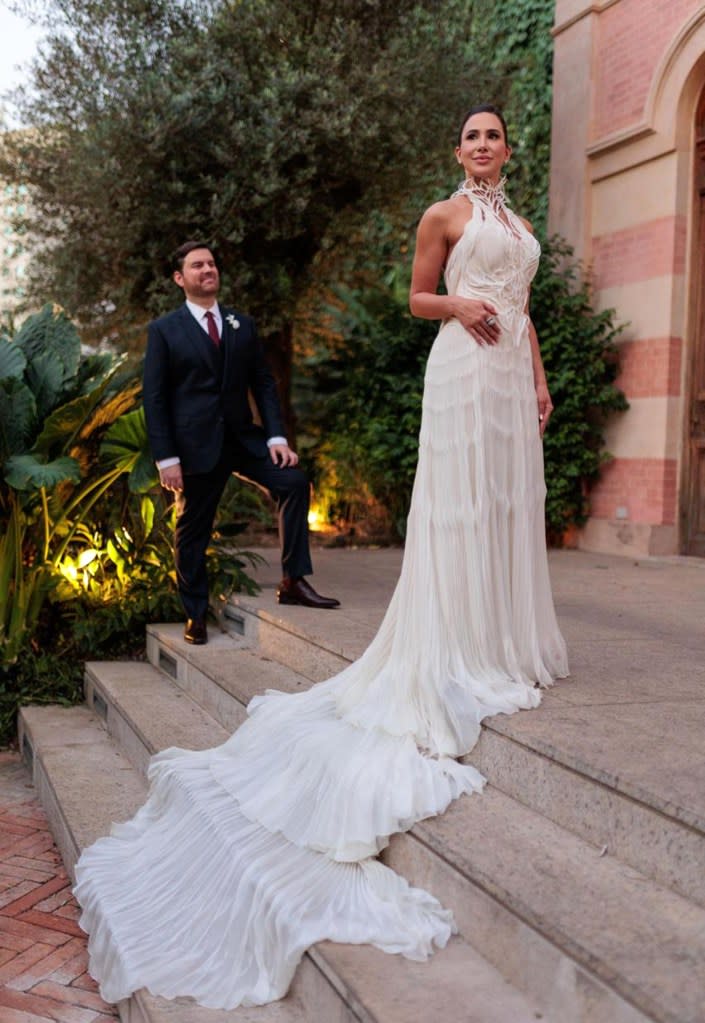
“We both feel fashion is a form of art,” van Herpen said of the bride. “She really dares to express herself and to embody that femininity, but also with the influences of new tech.”
3D printing, she added, allows more room for “freedom” in fashion, opening new avenues for design since “there’s just no way that we could make that by hand.”
“I also like the seamlessness and therefore also the smoothness. The cleanness of it is something that I really love,” said van Herpen, who first 3D-printed a piece in 2010.
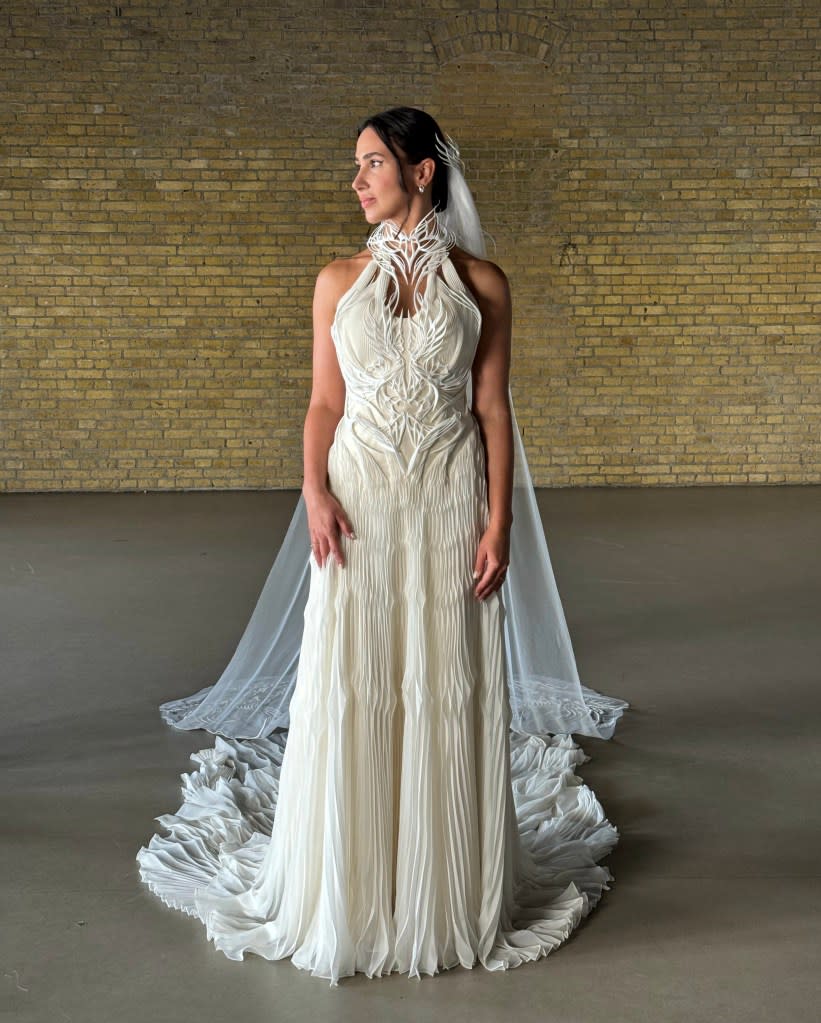
Back then, 3D printing in wearable fashion was largely in its infancy due to “limitations on durability of the flexibility,” since the stiffness of the materials made it nearly impossible to wear practically. Now, van Herpen said, that is not the reality.
In fact, it’s even “comfortable” to wear — and doesn’t necessarily require extra care and handling.
“The quality of the flexible material is so, so good,” said van Herpen, referencing the lightweight nylon material PA 12. “She can sit in it, she can basically do anything in it without it becoming less flexible over time.”
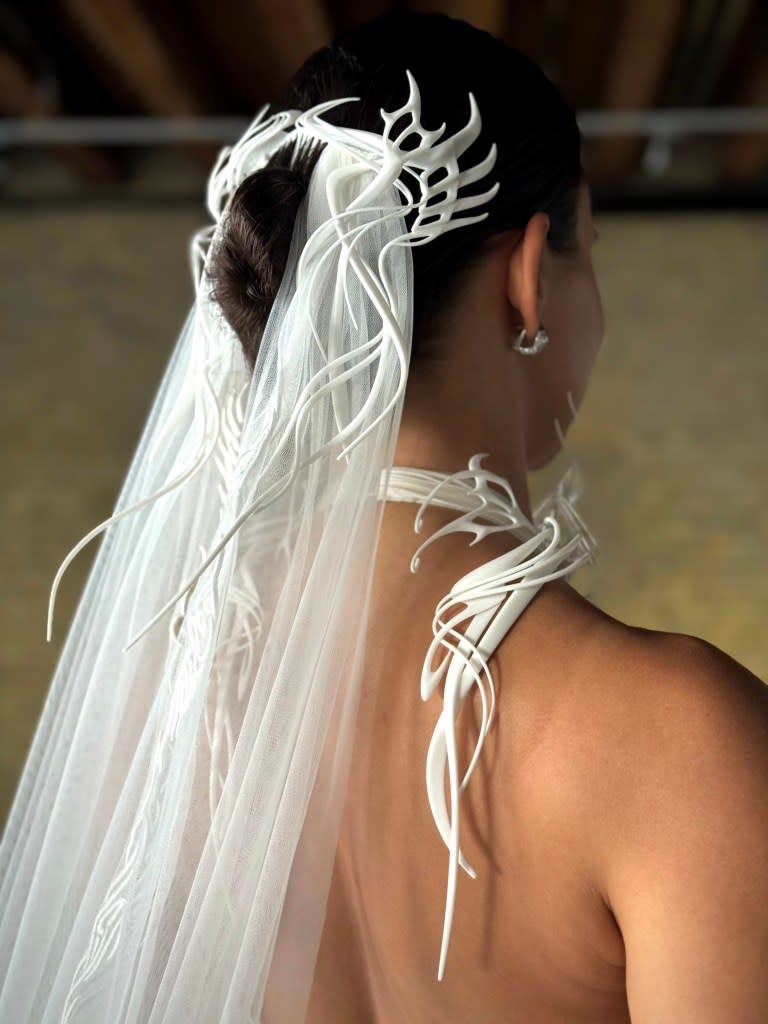
When Pavani first put on the gown — which she calls “a masterpiece” — she said it “was hard to contain” her tears.
“We had achieved everything I was hoping for,” she gushed. “The final design makes me feel powerful and feminine, a very unique and singular look.”

